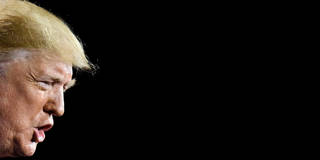For decades, the distinction between hard and soft power offered a framework for dividing the world between governments seeking mutually beneficial cooperation and those bent on zero-sum gains. But now that the traditional tools of soft power are increasingly being used as a means of coercion, the old rules no longer apply.
PARIS – International-relations theorists generally distinguish between soft and hard power. Soft power refers to the exercise of political influence through flexible, non-binding instruments such as economic assistance; the dissemination of environmental, health, and civil-security standards; and exports of cultural goods. Soft-power leaders are generally reluctant to coerce others and prefer to wield influence by example. The European Union is the leading exponent of this approach.
Hard power, by contrast, refers to military and economic instruments of coercion. Rather than leading by example, countries that depend on the hard power at their disposal wield it to try to bend others to their will. Following Machiavelli, they would rather be feared than loved. Here, Russia is a quintessential example. And between Europe and Russia, the United States has long represented a unique combination of both forms of power.
But nowadays, the distinction between hard and soft is becoming less relevant, because soft power itself is being weaponized. In what some commentators now refer to as “sharp power,” traditional soft-power tools – trade, legal standards, technology – are increasingly being used to coerce. If one were to identify three primary causes for this change, it would be the rise of China, the ensuing Sino-American rivalry, and the new powers of digital technology.

PARIS – International-relations theorists generally distinguish between soft and hard power. Soft power refers to the exercise of political influence through flexible, non-binding instruments such as economic assistance; the dissemination of environmental, health, and civil-security standards; and exports of cultural goods. Soft-power leaders are generally reluctant to coerce others and prefer to wield influence by example. The European Union is the leading exponent of this approach.
Hard power, by contrast, refers to military and economic instruments of coercion. Rather than leading by example, countries that depend on the hard power at their disposal wield it to try to bend others to their will. Following Machiavelli, they would rather be feared than loved. Here, Russia is a quintessential example. And between Europe and Russia, the United States has long represented a unique combination of both forms of power.
But nowadays, the distinction between hard and soft is becoming less relevant, because soft power itself is being weaponized. In what some commentators now refer to as “sharp power,” traditional soft-power tools – trade, legal standards, technology – are increasingly being used to coerce. If one were to identify three primary causes for this change, it would be the rise of China, the ensuing Sino-American rivalry, and the new powers of digital technology.